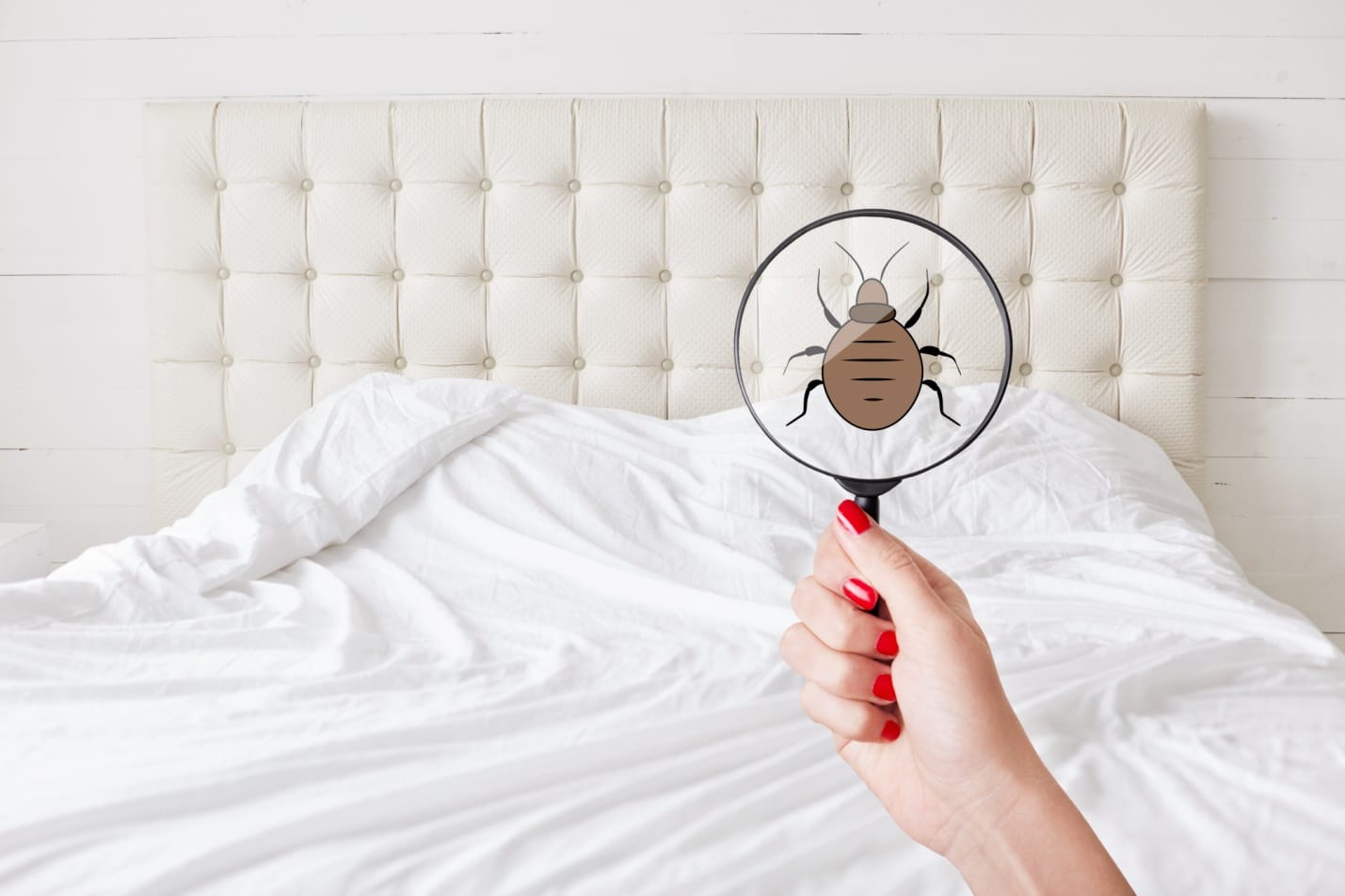Are you waking up to mysterious bites on your skin? This could be a sign that you’re sharing your home with some unwanted guests.
Imagine this: tiny critters crawling around your home, infesting your bed and furniture, out of sight, and biting you while you sleep. This isn’t a plot from a horror movie; it’s the reality of a bed bug infestation. Incredibly elusive and persistent, bed bugs can invade your home without you noticing until it’s too late.
The question you should be asking is, what are the signs of bed bugs, and how can you catch them early?
The key to dealing with bed bugs is recognizing the early signs of infestation and taking immediate action. Read on as we reveal the six tell-tale signs of a bed bug infestation, which can help you nip this problem in the bud. Let’s help you reclaim your peaceful night’s sleep!
1) Observable Bites on Your Skin
One clear indication of bed bugs in your home is finding peculiar bites on your skin. These nocturnal pests feed on your blood as you slumber, leading to a noticeable aftermath.
Upon waking, you may discover small, inflamed, and itching bumps on your body. These marks frequently follow a straight line or a zigzag pattern and predominantly appear on areas exposed during your sleep.
While these bites could be mistaken for other insect bites, their distinctive arrangement often implies bed bugs. The presence of a line or cluster of bites could be your initial warning.
Although bed bug bites aren’t generally hazardous to health, they can cause discomfort and irritation. If you observe such bite patterns, it’s an indication to inspect your living space for more signs of bed bugs.
2) Blood Stains and Fecal Marks on Your Bedding and Mattresses
Bed bugs leave behind evidence beyond just bites. Another distinct sign is the presence of small stains on your sheets and mattresses that you might not notice unless you’re actively looking.
So, how does this transpire? When bed bugs indulge in a blood meal, they can leave behind tiny blood spots. These stains result from their bites or from being squashed post-feeding. Yes, you might accidentally crush a satiated bed bug while turning in your sleep.
On top of this, bed bugs aren’t known for their cleanliness. They deposit small, inky fecal spots in the areas they frequent and feed. These spots, composed of partially digested blood, often resemble small specks or smears.
The detection of blood stains or fecal marks on your bedding or mattress is a glaring sign. It signifies that you may be dealing with a bed bug problem, and it’s time to think about measures to eradicate these unwelcome guests from your home.
3) Presence of Bed Bug Eggs and Eggshells
Your next step in learning how to get rid of bed bugs is understanding their life cycle. Bed bugs are like invisible invaders, and their eggs are even harder to spot. However, they’re a major sign that these pests have chosen your home for their next generation.
Bed bug eggs are tiny, about the size of a pinhead, and off-white in color. They often cling to dark, hidden surfaces like mattress seams, furniture crevices, and even behind wallpapers.
Beside the eggs, you might also find eggshells. As new bed bugs hatch, they leave behind these tiny, translucent shells. Finding these eggshells in your home is a sure sign of an active bed bug infestation.
Remember, effective bed bug treatment involves not just eliminating the adults but also these tiny eggs and eggshells.
4) Shed Skins
Bed bugs, like many insects, go through several stages in their life cycle. As they grow from nymphs to mature adults, they shed their skin five times. Each of these instances leaves behind a cast-off exoskeleton, also known as shed skins.
These shed skins look like lighter, empty versions of the bed bugs themselves. You might find these in the same places you’d find bed bug eggs: mattresses, furniture crevices, and other hiding places.
Finding shed skins is a sign that bed bugs are growing and multiplying in your home. They indicate a current and growing infestation.
Keeping a keen eye out for these shed skins helps in early detection. This awareness can make the difference between a small, manageable problem and a full-blown infestation.
5) Unpleasant, Musty Odor
Can you smell that? It’s another hint that bed bugs may be living in your home. When the infestation gets large, a distinct, musty scent starts to fill the room.
This odor, often described as something similar to wet, moldy clothes or a sweet, sickly smell, comes from the bed bugs’ scent glands. It’s their way of communicating.
If you notice this unusual smell, it’s high time to seek professional bed bug treatment. The odor suggests a sizable infestation that needs immediate attention.
6) Actual Sightings of Bed Bugs
While bed bugs are experts at hiding, you might actually see them. These pests are small, about the size of an apple seed, with flat, oval bodies. They’re reddish-brown, becoming darker and rounder after feeding.
Bed bugs might be seen in the folds of mattresses, between couch cushions, or behind picture frames. If you spot these insects, don’t dismiss them. Actual sightings of bed bugs confirm their presence in your home.
At this stage, reaching out to a trusted bed bug company is your best move. You can find pest control services here. The professionals can assess and tackle the infestation effectively.
Watch Out For More Signs of Bed Bugs
In a nutshell, being vigilant for the signs of bed bugs is your first step to a bug-free home. It’s crucial not just to recognize these signs but to act quickly. Early detection can prevent extensive damage and the need for prolonged bed bug treatment.
For all your bed bug concerns, don’t hesitate to contact a reliable pest control company ASAP. You can dive into our blog to learn more tips for home care and improvements.








